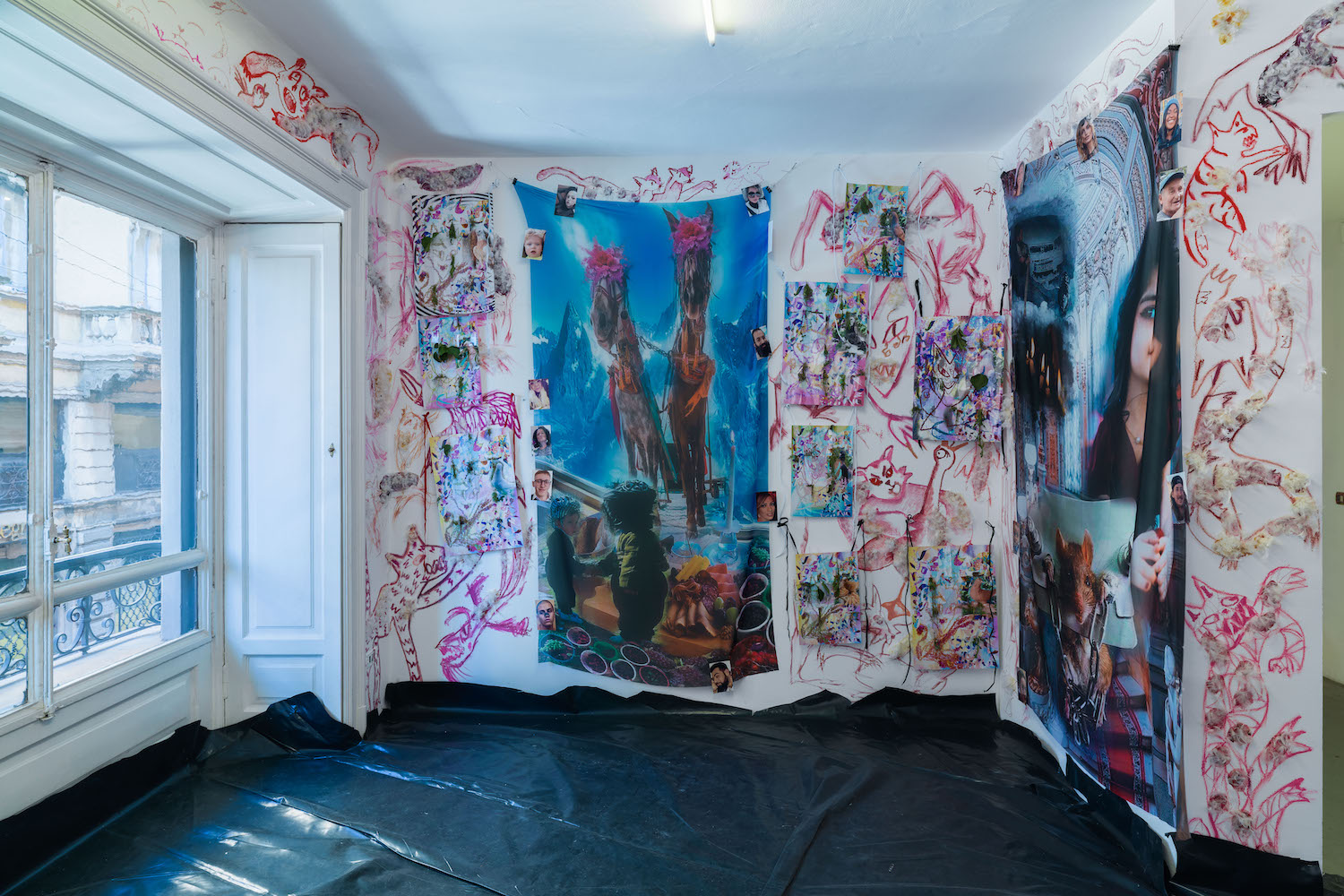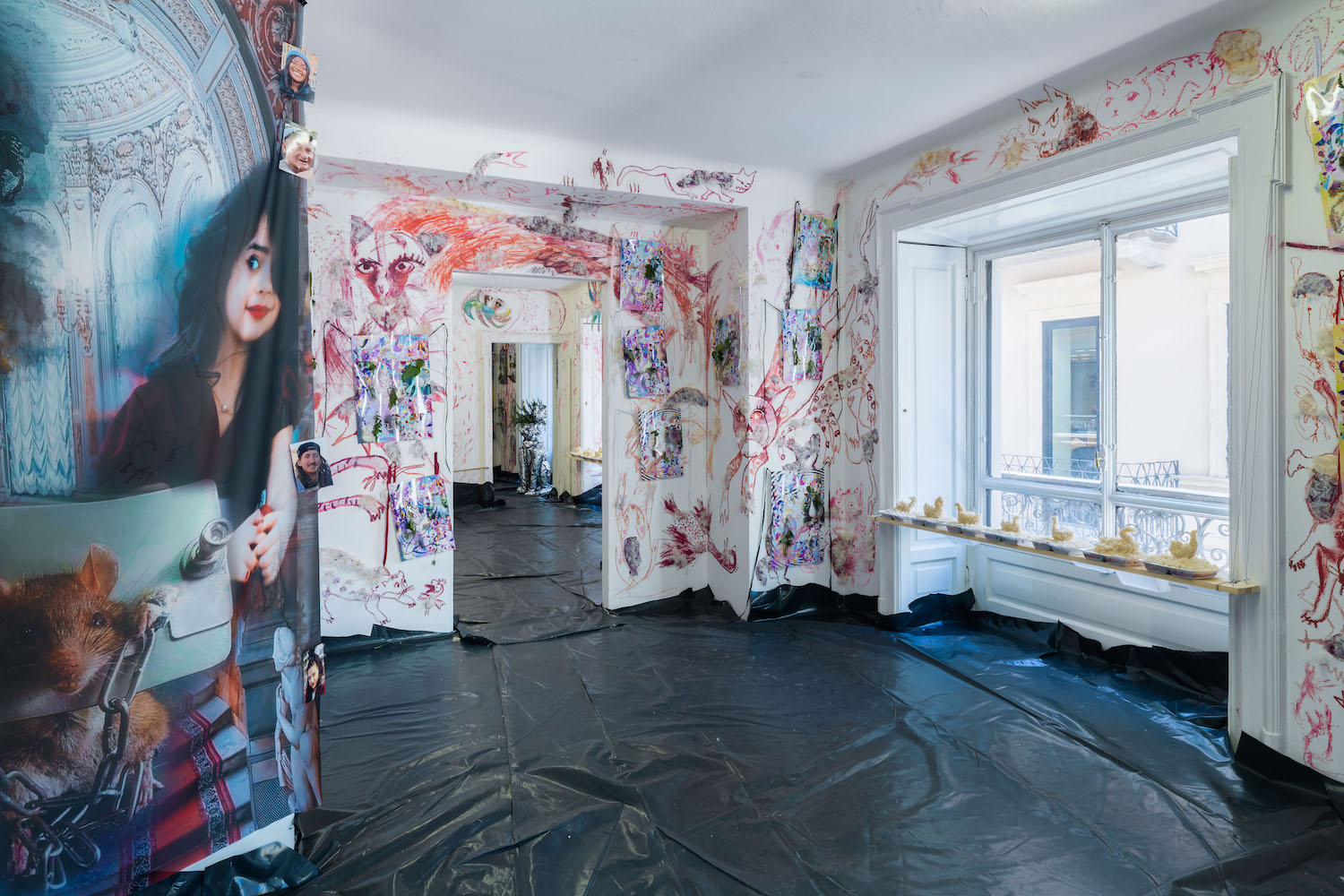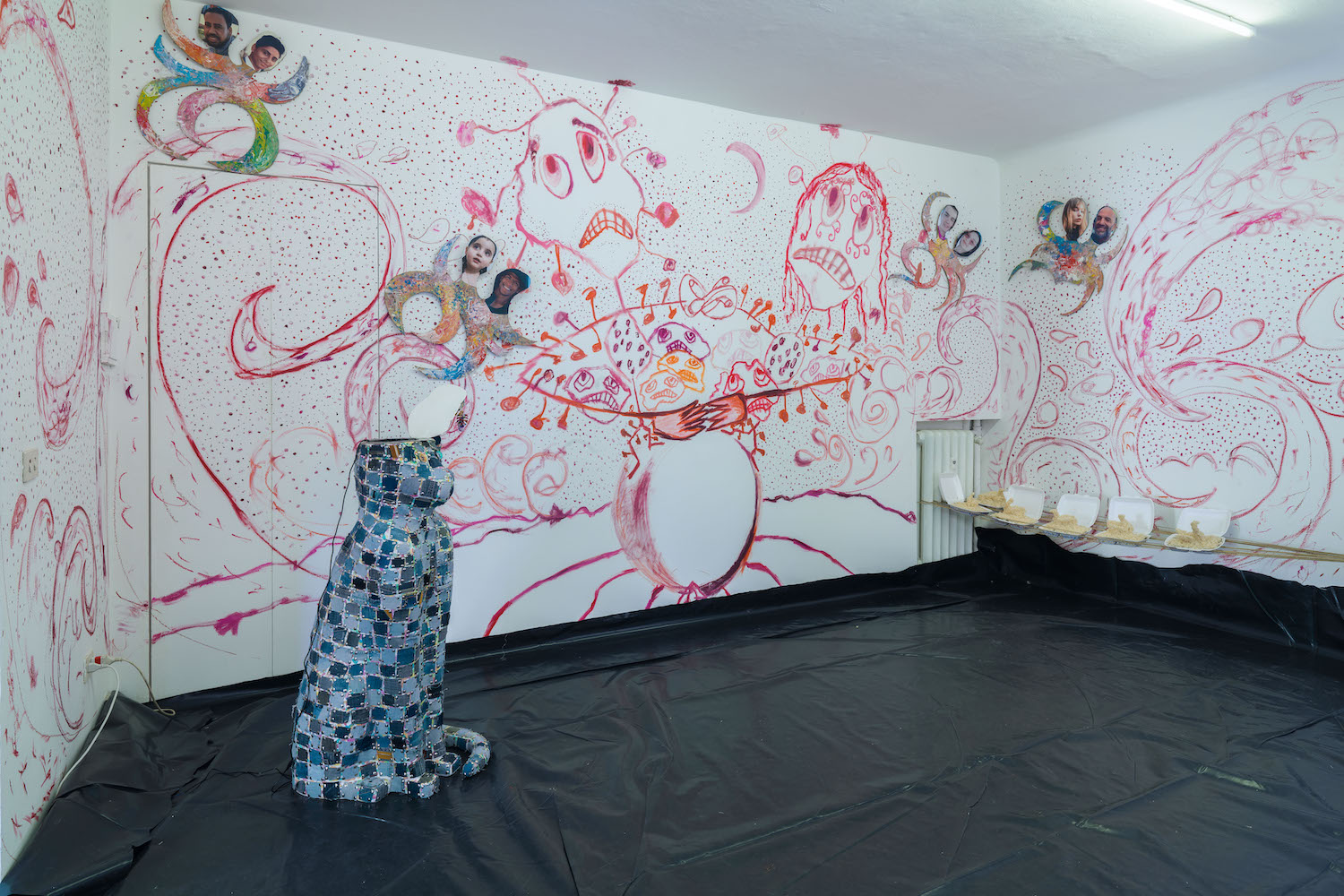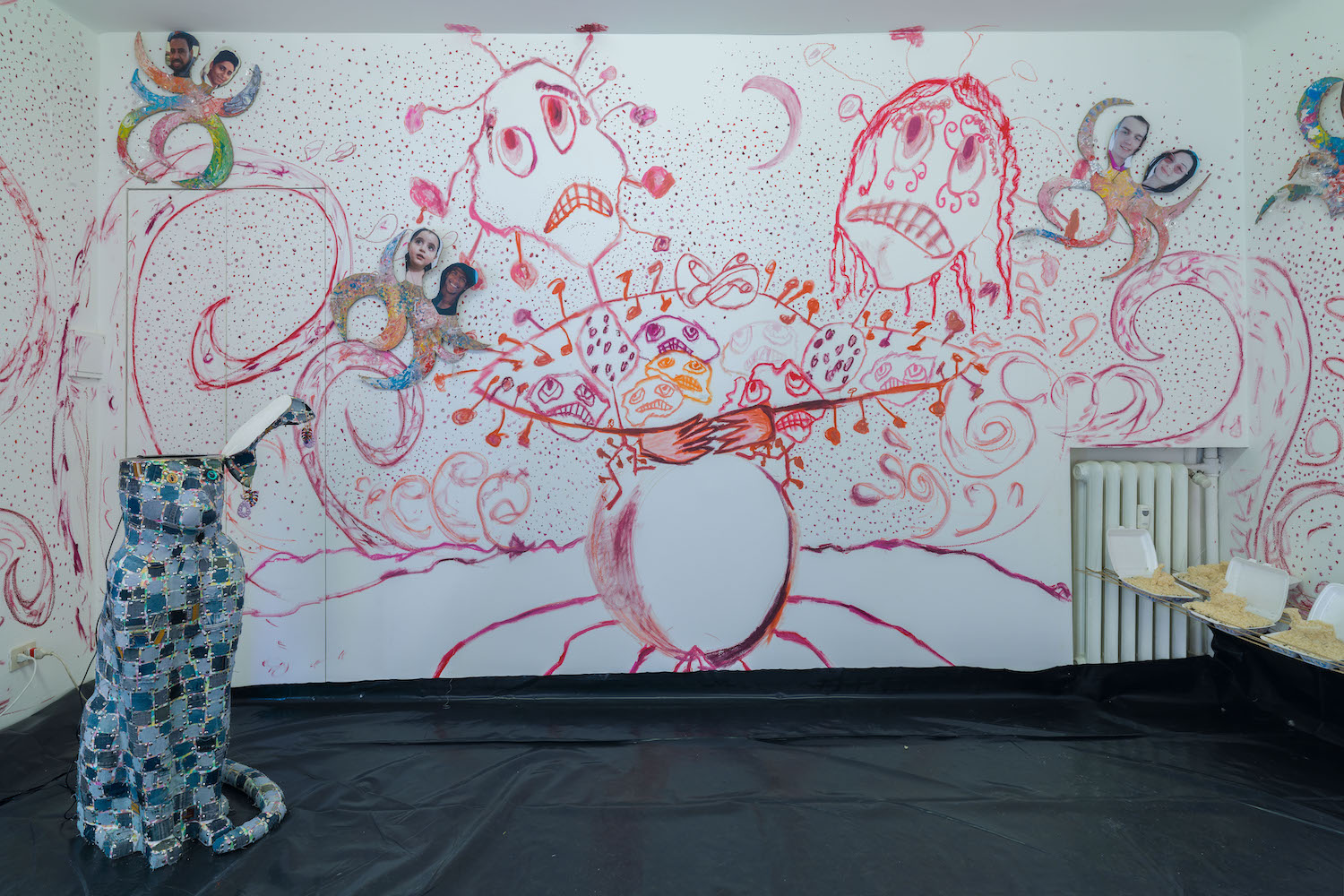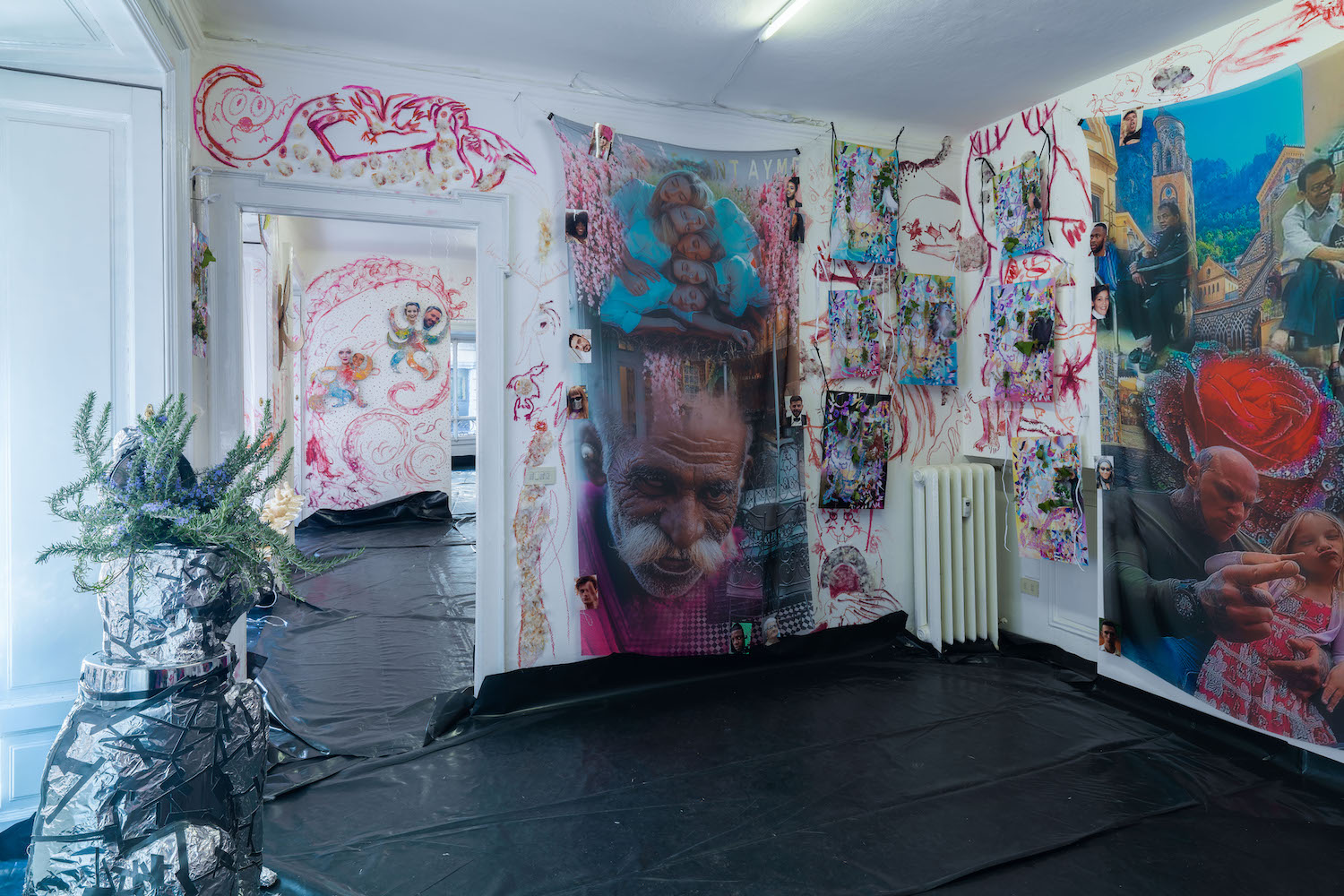Cats, an unofficial symbol of déjà vu, are the main denizens of the mirror world that Jared Madere has created in his three concurrent shows at Federico Vavassori. In the first show, in the mural titled Cat swat bird, cats are shown catching and goring birds in a violent and joyful pattern of mischief rendered in red lipstick, torrents of feathers, and marmalade guts. These wall drawings are repeated in the third room of the gallery, this time titled Cat swat bird Rematch, although the victor of this combat remains feline. This room also features a large cat sculpture made of aluminum and electrical tape: You know there is nothing to understand because you’ve been there. The sculpture’s head is sliced open, exposing a tangled lavender plant sprouting crown-like in every direction. A spitting image of the sculpture, this time made of wood covered in patches of denim, lives in the central show, “Paths to G-ddess 〜 Tiny Dick Timmy Ricochet 〜 Live from the Geomancer’s Clit Ring.” This exhibition is composed of a lipstick mural portraying the imminent demise of a bacteria family perched on the titular clitoris ring of a Geomancer. The family is shown huddled together, terrified of the waves of fluid drawn on the neighboring walls that threaten to wash them away. Multi-headed Earth Angels, made of cardboard, paint, tattered plastic, and streamers of dental floss, are nailed to the walls seemingly riding the waves, with the intention of swooping up the family and rescuing them from the perils of the sex organ they call home.
Walls in adjacent rooms are covered with Cat swat drawings, hanging silk tapestries, and smaller wall works made of photographic paper and sprouting greenery depicting other variations of cat-and-bird conflict and coexistence. The tapestries, digital collages on silk, offer an opportunity to understand, maybe not the content but, the purpose of Jared Madere’s art practice in general. These pieces honor and explore further the tradition of tapestry-making in the Middle Ages — the kind you might see at the Met or the British Museum. A good example of this tradition is The Story of the Trojan War, Death of Troilus, Achilles, and Paris (Spain, 1456), which contains several overlapping narratives that are presented as simultaneous visually but not chronologically. The tapestry’s upper-left corner depicts Troilus in combat with Achilles; elsewhere Troilus’s head is dangling from the tail of Achilles’s horse like a can tied to a car’s tailpipe “Just Married” spray painted on the window. Trojan War can’t be read linearly from top to bottom or left to right. This everything-at-once method of storytelling is a studied and then surpassed jumping-off point for Madere. His tapestries are a cavalcade of cosmic events that move beyond nonlinearity. They are iconic — a term here used both as an idiom and art-historical qualifier. Iconographic works of art are images outside of the sequential flow of time; instead of representing a particular moment or reaction, they exist as a philosophical or spiritual maxim. Madonna or Madonna mother Mary holding baby Jesus: a good way to understand Jared’s tapestries and art in general is as a synthesis of both.

